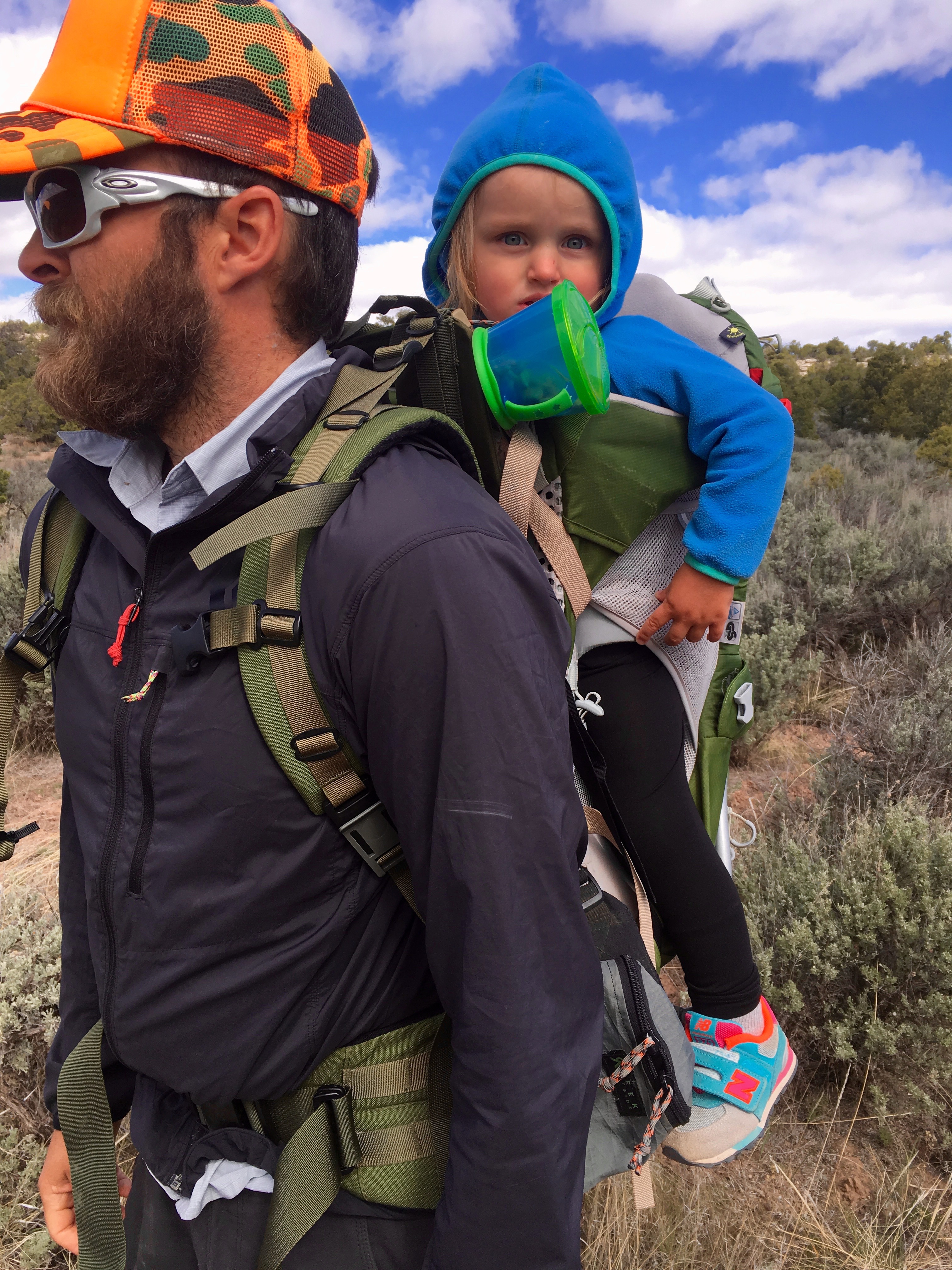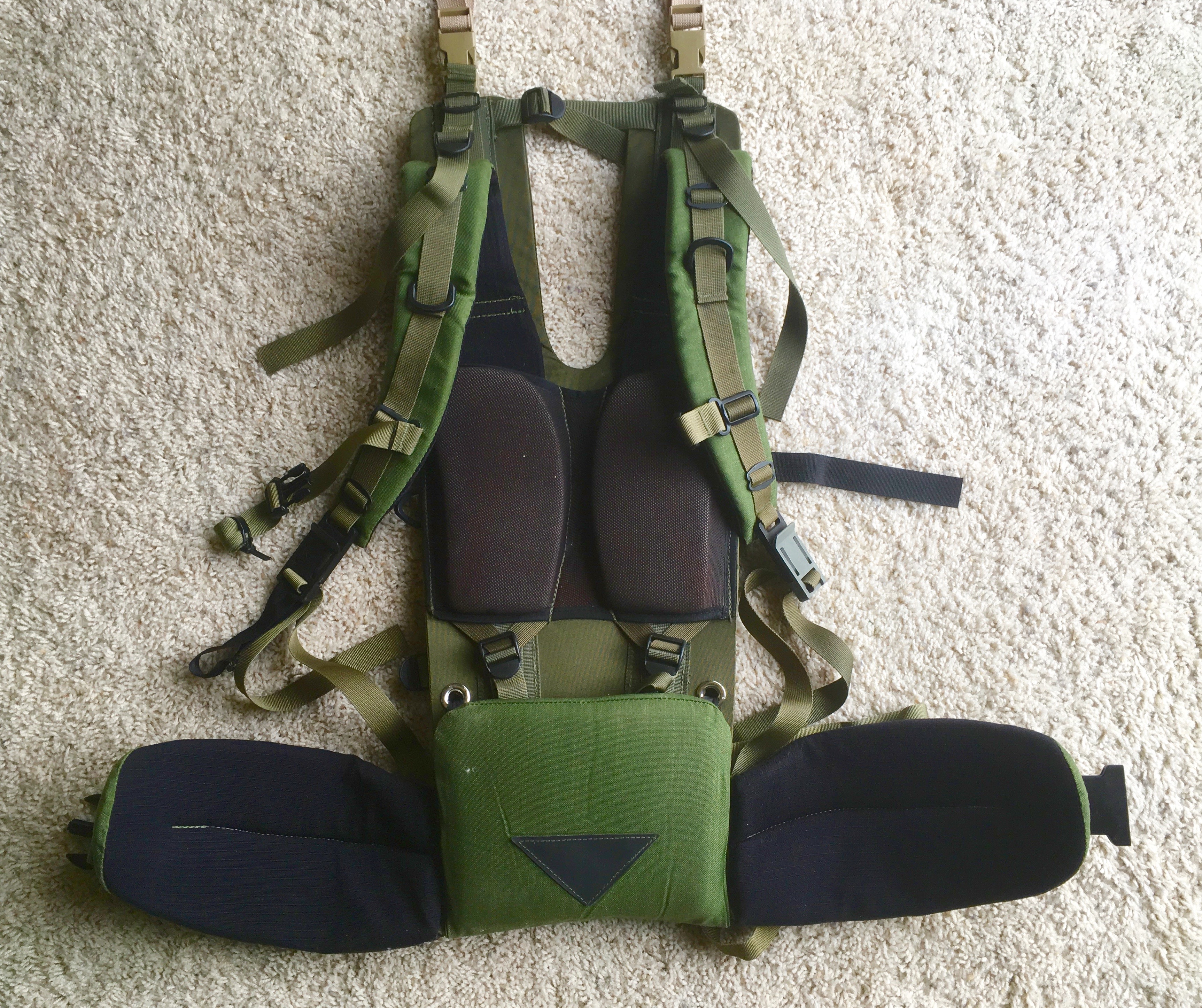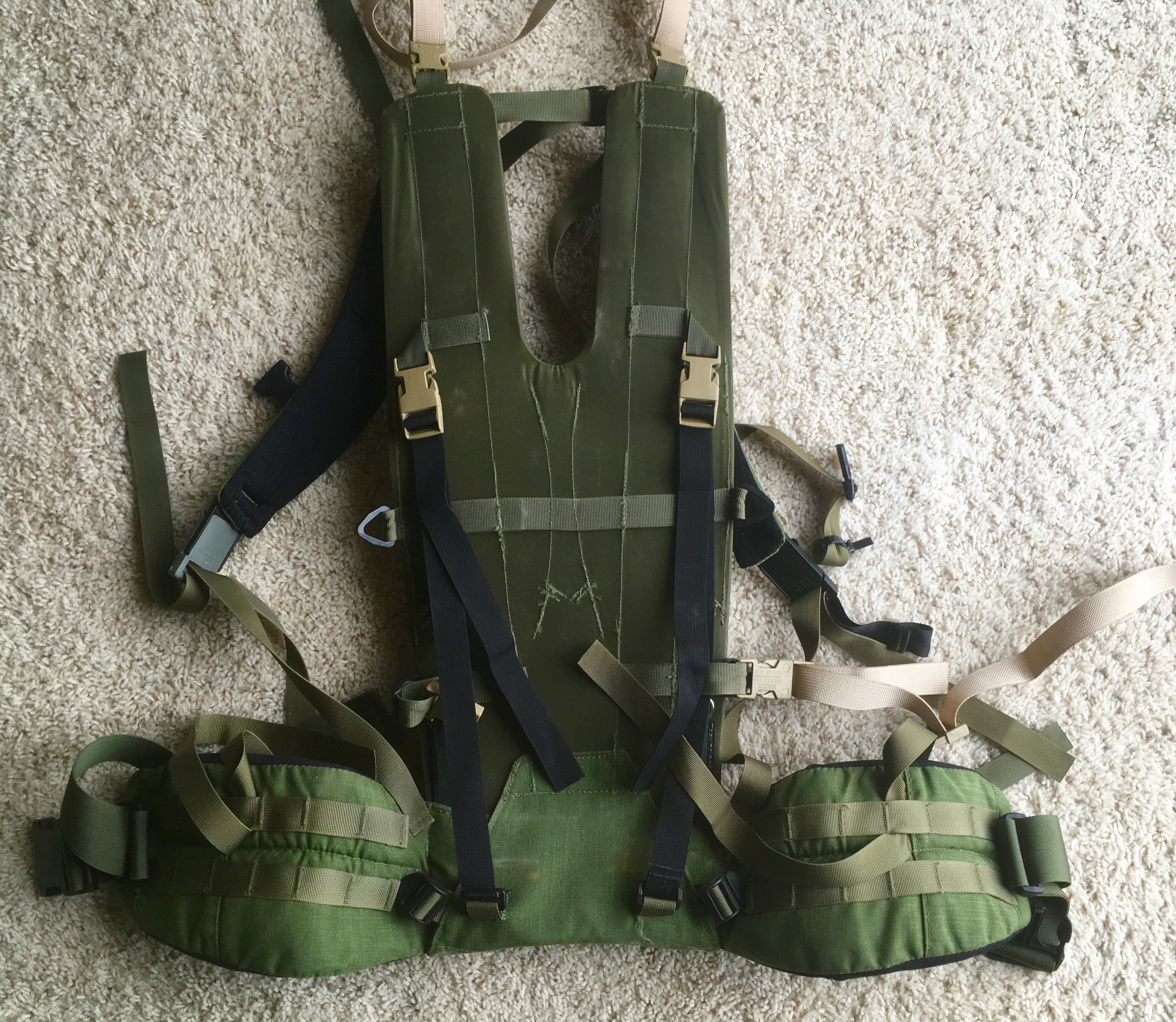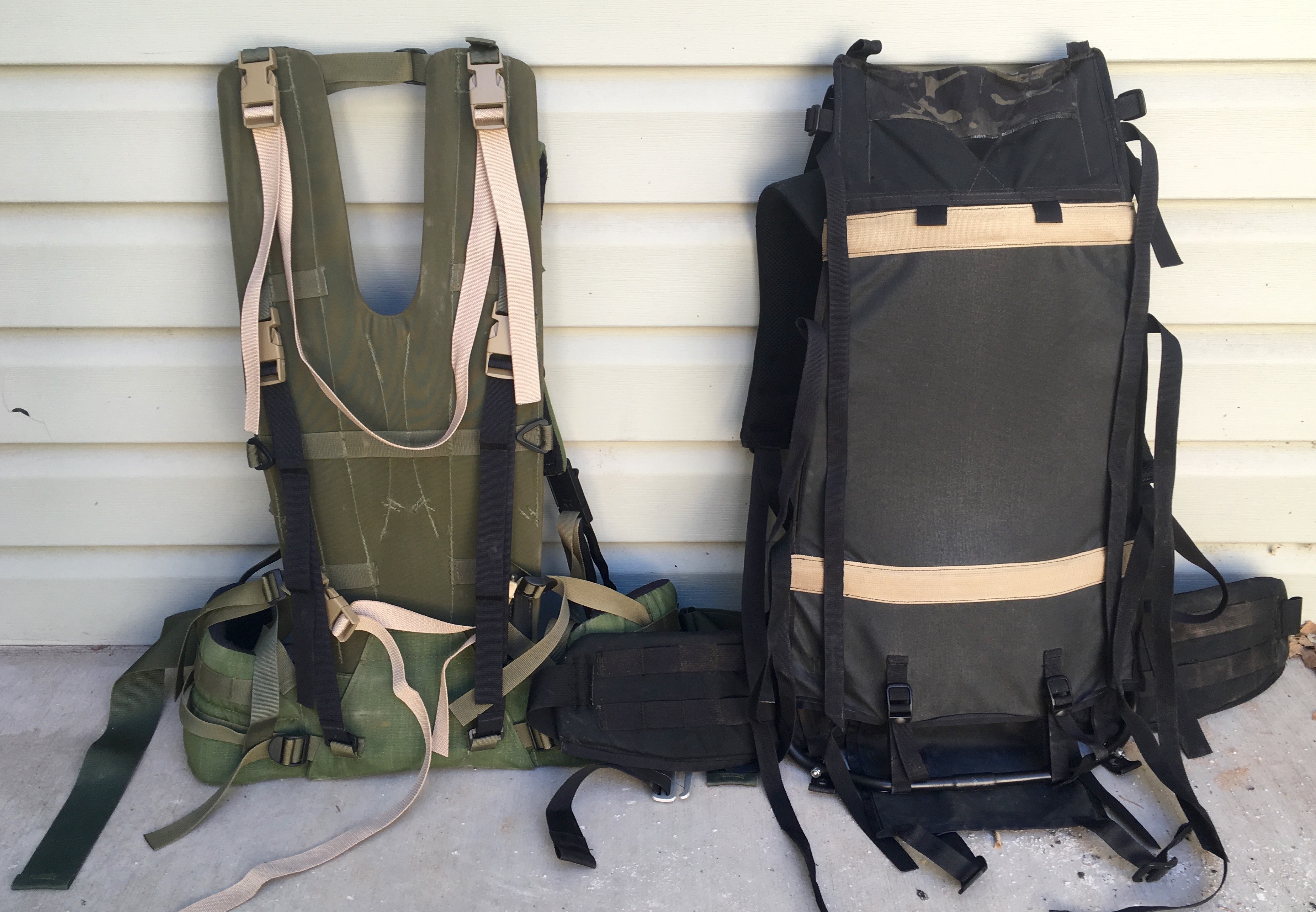
When it comes to modern, internal frame load haulers for big game hunting Kifaru has defined the genre and, web traffic and analytics would have one assume, sells more than any of their competitors, by a considerable margin. Recently I had a chance to borrow an older Duplex frame and spend a decent amount of time under it, and what follows are my thoughts on why it has become the hunting pack of record. What I haven’t done is use the Duplex to pack out an animal during a multiday backcountry hunt, the sort of thing that would really give my insight depth, so take the following as preliminary only.
This pack is an older Duplex, and while some salient details have changed considerably, the guts are generalizable to the most current generation. Where alterations are significant I have tried to note them specifically.


The Duplex is a tapered (11″ wide at the top, 9″ at the base) sheet of HDPE sewn into a packcloth sleeve, with dual stay channels, suspension elements, and tabs for compression straps sewn on. Belts can be swapped, and the length of each shoulder strap adjusted independently. Currently Kifaru offers three frame heights (22″, 24″, 26″) and according to internet rumor will make a 28″ frame on request. Kifaru frames are purchased separately from the bags, which slide on to make a complete system. It is worth noting that while many other modern hunting packs are built around a separate frame and bag to enable meat to be hauled between the two, Kifaru does not really embrace this approach and their designs aren’t fully tailored to it. Rather, the frame is sold separately from the bag so that a customer can buy and use different bags for different pursuits, as well as make the bags themselves less expensive and easier to sew.
Modularity is a haulmark of Kifaru, and doubtless a good way to sell more stuff.
Kifaru uses dual stays to shape the framesheet, and to get the load to adhere to the wearer. This pack has 1″ by 1/8″ 7075 stays, while currently Kifaru sells frame with either 1″ by 1/4″ 6000 series stays, carbon/wood laminate stays, or straight carbon rods (thick carbon arrow shafts). In my mind the trademark Kifaru feature is the broad pocket in the back of belt, which doesn’t just provide a bottom encasement for the stays, but envelops the whole framesheet. A full width lumbar pad then wraps up to hold the belt in place. This arrangement does two things; it reduces or eliminates issues with point pressure in the users lumbar, and minimizes the number of fabric elements between the user and the suspension. These are the two issues which tend to plague lumbar pad systems under heavy load, and it is hard to think of a way Kifaru could have better managed them without going to a categorically different design.
The stays are fairly narrow, 8″ center to center at the top, and 5.5″ at the base. The HDPE is thick enough that running the stays out to the edge is not necessary for structural cohesion under load.
The shoulder straps slide behind the twin torso pads, and adjust via buckles near the lumbar pad (this arrangement is a bit different in the newer frames). The torso pads are quite thick, and the part of the shoulder straps which runs behind the pads contains a hefty piece of plastic. The straps themselves are subtly curved and what I consider on the narrow side (2.5″ max), though this also may have changed recently. It is worth noting that one cannot change the angle of the shoulder straps, and because of the plastic sewn into the lower segments the straps cannot articulate. If the strap angle doesn’t suit you, you are stuck.
Overall this Duplex seems to adhere to the “straps are only there for putting the pack on and stabilizing things” school.
The Duplex seems relatively simple to make, largely because most of the elements are sewn directly to the frame, which means through the HDPE sheet. Provided you’ve got the mechanical muscle to make this sustainable it seems like a great way to go, as any issues with alignment or flipped parts inside out would be mostly eliminated. The result is some ugly multi-pass reinforcement, as bartacking through 1/8″ of plastic would for several reasons not be a good idea.
Hunting loads require very tight compression of potentially awkward and shift-y loads, which makes barrelling and loads poking one in the back a very serious issue. While backpacking barrelling can usually be pawned off as user error, but when hauling quarters or a big bag of deboned meat this is not so simple. Many of the attempts at “ultralight” hunting frames which I covered here use various methods to address this without resorting to a potentially heavy big piece of plastic. Exo and Mystery Ranch use horizontal carbon rods, Seek Outside uses horizontal aluminum bars, while Stone Glacier uses two carbon rods in an X pattern.
Kifaru has also played the weight savings game, first with the now extinct Bikini frame, which used their vertical composite stays with cross members riveted to the top and bottom. The bikini frame looked cool, but apparently the lack of a frame sheet caused issues with both point pressure in the lumbar and with gear intrusion between the stays. The most recent Kifaru hunting frame went back to the classic formula, but halved the thickness of the HDPE. Claimed weight, for composite stays and a 26″ frame, is 3 pounds 5 ounces, within a few ounces of the Stone Glacier X-Curve, 7 ounces more than the Exo K2 frame, and 9 more than the Seek Outside Revolution. The thicker framesheet, found in the Kifaru Tactical frame, is a full 3 pounds 14 ounces.

There is little question in my mind that the framesheet is with Kifaru majorily responsible for the weight gain over competing products. I also see how it could have a lot to offer with its simpler and fully rigid frame. At the same time, I’m curious just how much of that rigidity the 1/16″ HDPE gives up.

Comparing the Duplex with the Revolution is inevitable, as the later is my benchmark for how huge loads should be managed. Pictured above, with the Revo at 26″, the differences are easy to see. A 9″ bottom frame width versus a 14″ is a huge difference, as is of course the hanging belt versus lumbar pad system. A wider frame provides a lot of advantages when it comes to carrying big loads, but Kifaru to a large extent hamstrung in this department. They have one frame width, and that has to be narrow enough to fit the lumbars of 90+ percent of their customers. They work around this by making many of their bags 14″ wide at the bottom, and controlling that width by hooking the belt stabilizer and delta straps to the back/front seam of the bag. Whether this gets the job done I cannot say.
The lumbar pad issue is the stickier one, and something I’m glad to have another data point on. The lumbar pad has substantial curb appeal, but I remain acutely skeptical that it adds much of value when it comes to actual load hauling. I do think, as discussed in the comments of the Hunt Expo post, that a thick lumbar pad as fit adjuster for folks with big shoulders is quite relevant. There is also something to be said for having thicker and/or denser foam in the lumbar region, at least compared to the sides. At least for me, the later is somewhat delicate and prone to bruising and chaffing, while the biggest issue with the former is having something which does not slip.
Lastly, it was instructive using the Duplex with the thinnish 7075 stays. Anyone who tells you 6000 series is good enough for a premium pack is full of shit, 7075 will take and hold a bend while remaining springy and flexible in a very pleasing fashion. In fact, for genuinely big loads 1″ by 1/8″ is not thick enough. In the top photo one can see that the 26″ Duplex is quite low on me, with only the modest ~40 pound load of LB plus day gear and two packs. Part of this is due to the sag inherent in lumbar pads, but part of it is due to the flex of the stays when the load lifters are engaged. For conventional loads the thinner stays are for me perfect, and a nice antidote to the totally rigid Seek Outside frame. On the other hand, when I go above 50 pounds I do not want the frame flexing at all, and here the rigid aluminum tubing (and I asssume the composite and thicker aluminum stays Kifaru uses) come into their own.
More than ever I am convinced, as I hinted a few months ago, that the future of load hauling packs for hunting will be a composite version of the classic external frames. Something light, strong, with flex and rigidity build into the layup in all the right places. Most importantly, attachment points for suspension and compression would be molded right in, saving weight and (when scaled for enough volume) production cost. Sewing is fun, and an accessible art that can be exceedingly beautiful, but in the 21st century seems a somewhat anachronistic way of doing many things.






Leave a reply to Camber Rebmac Cancel reply